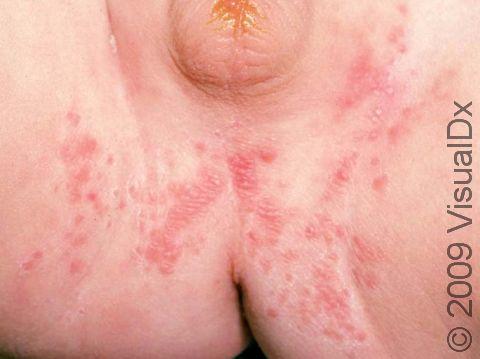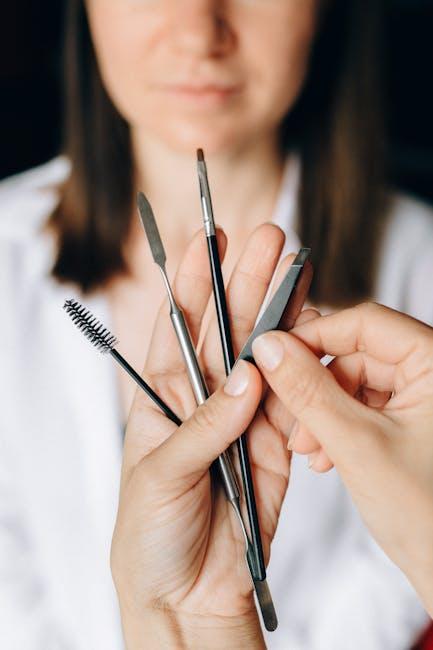Table of Contents
- Understanding Diaper Rash in Adults and Its Causes
- Key Ingredients to Look for in Adult Diaper Rash Creams
- Top Recommended Diaper Rash Creams for Effective Relief
- Application Tips for Maximum Benefit of Diaper Rash Creams
- Preventive Measures to Avoid Diaper Rash Recurrences in Adults
- Q&A
- The Way Forward


Understanding Diaper Rash in Adults and Its Causes
Diaper rash in adults, commonly referred to as adult dermatitis or rash, can be an uncomfortable condition that often arises from prolonged exposure to moisture, friction, and irritants. It can appear in various areas, including the buttocks, groin, and thighs, similar to what is observed in infants. Understanding the underlying causes is crucial to mitigate diaper rash effectively. Factors contributing to this condition may include:
- Excess moisture: Prolonged contact with urine and feces can irritate the skin.
- Friction: Tight clothing or movement can cause chafing, worsening the rash.
- Skin sensitivities: Certain products, such as soaps or detergents, may trigger allergic reactions.
- Medical conditions: Conditions like obesity or incontinence can create environments conducive to rash development.
Moreover, certain lifestyle factors can exacerbate the occurrence of adult diaper rash. For instance, poor hygiene practices can lead to bacterial or fungal overgrowth, particularly in warm and moist areas of the body. This can result in a vicious cycle where the rash persists despite attempts to treat it. Additionally, individuals with compromised immune systems or those taking specific medications may find themselves more susceptible to skin breakdown. Recognizing these influences allows adults to take proactive measures in care and prevention.
Addressing adult diaper rash often requires a multi-faceted approach. Treatment options vary widely, and the effectiveness can depend on the underlying cause. Popular remedies include:
- Barrier creams: Products containing zinc oxide or petroleum jelly can help protect the skin.
- Antifungal or antibacterial creams: These are effective for rashes caused by yeast or bacteria.
- Regular cleansing: Keeping the affected areas dry and clean is essential for healing.
In severe or persistent cases, seeking advice from a healthcare provider is crucial. They may recommend more targeted treatments or investigate any underlying health conditions that could be contributing to the issue. Understanding these factors not only informs treatment decisions but also empowers individuals to make choices that enhance their overall skin health.
Key Ingredients to Look for in Adult Diaper Rash Creams
When selecting a diaper rash cream for adults, understanding the key ingredients can make all the difference in ensuring optimal skin health and comfort. One of the most essential components to look for is zinc oxide. Renowned for its soothing and protective properties, zinc oxide forms a barrier on the skin that helps prevent moisture and irritants from causing further damage. Additionally, it promotes healing and reduces inflammation, making it a staple in many effective creams.
Another important ingredient is petrolatum, commonly known as petroleum jelly. This ingredient serves to create a thick moisture barrier that locks in hydration while also protecting the skin from external irritants. The occlusive nature of petrolatum ensures that the skin remains supple and protected, which is crucial for preventing and treating rashes. Likewise, creams containing lanolin can provide added moisturizing benefits, further enhancing skin softness and elasticity.
Natural ingredients like aloe vera and shea butter are also noteworthy. Aloe vera is celebrated for its soothing and anti-inflammatory qualities, which can help reduce discomfort associated with diaper rash. Meanwhile, shea butter is a rich, emollient substance known for its ability to deeply hydrate and nourish the skin. Here’s a quick reference table summarizing the benefits of these key ingredients:
| Ingredient | Benefits |
|---|---|
| Zinc Oxide | Forms a protective barrier, promotes healing |
| Petrolatum | Locks in moisture, shields against irritants |
| Aloe Vera | Soothes and reduces inflammation |
| Shea Butter | Deeply hydrates and nourishes the skin |


Top Recommended Diaper Rash Creams for Effective Relief
Finding the right diaper rash cream for adults can make a significant difference in comfort and skin health. These creams are specifically formulated to soothe irritation and create a protective barrier on the skin. When selecting an effective product, consider those that contain ingredients such as zinc oxide, which is known for its antimicrobial properties, and lanolin, which helps seal in moisture. Here are some top options to consider:
- Desitin Maximum Strength: This cream offers heavy-duty protection and is a favorite for addressing severe diaper rash.
- Boudreaux’s Butt Paste: With a blend of natural ingredients, this paste soothes and protects while being gentle on sensitive skin.
- Aquaphor Healing Ointment: Ideal for not just diaper rash but also dry skin, this ointment provides long-lasting moisture and is fragrance-free.
To further help in your decision-making, consider the following summarized comparisons of key features for some top-rated creams:
| Product | Active Ingredients | Texture | Best For |
|---|---|---|---|
| Desitin Maximum Strength | Zinc Oxide 40% | Thick Cream | Severe Cases |
| Boudreaux’s Butt Paste | Zinc Oxide 16% | Paste | Prevention & Treatment |
| Aquaphor Healing Ointment | Petrolatum | Ointment | Multi-purpose Care |
When applying any diaper rash cream, ensure the skin is clean and dry before use. Apply a generous layer to the affected area and reapply as necessary, especially after bathing or changing. Moreover, monitor the rash’s progression and consult a healthcare professional if the condition doesn’t improve or worsens, as persistent rashes may require more than topical treatment.


Application Tips for Maximum Benefit of Diaper Rash Creams
To get the most out of diaper rash creams, proper application is key. Start by ensuring that the affected area is clean and dry. Gently wash the skin with mild soap and water, then pat it dry rather than rubbing. This minimizes irritation and helps the cream adhere better. When applying the cream, use a generous amount to form a protective barrier over the skin, focusing specifically on any red or inflamed areas. For optimal results, consider the following tips:
- Use as needed: Apply the cream at every diaper change or whenever the area is prone to irritation.
- Avoid excessive friction: When applying, use your fingers or a soft applicator to prevent further skin irritation.
- Layer wisely: If using other skincare products, layer the cream last to protect the skin effectively.
Timing can also influence the effectiveness of the cream. Consider applying it at night before bed, as prolonged contact during sleep can enhance its protective qualities. If you’re caring for someone who has difficulty signaling discomfort, a proactive approach is beneficial. Keep an eye out for any signs of irritation and address them promptly. Remember, consistency is crucial; frequent use can help in preventing rashes before they develop. The following table provides a quick reference for timing and application:
| Application Time | Benefits |
|---|---|
| After Bathing | Locks in moisture and protects from irritation |
| At Every Change | Prevents rashes from becoming established |
| Before Bed | Provides overnight protection against friction |


Preventive Measures to Avoid Diaper Rash Recurrences in Adults
Maintaining proper hygiene is crucial in preventing the recurrence of skin irritation. Regularly cleansing the affected area with mild, fragrance-free soap and warm water can significantly reduce moisture and prevent skin breakdown. After cleansing, ensure the skin is thoroughly dried to avoid creating a damp environment that promotes irritation. Implementing a routine that includes gentle exfoliation with soft, breathable fabrics can further help in keeping the skin healthy.
Utilizing protective barriers can be a game-changer for those prone to skin irritation. Here are some effective measures to consider:
- Barrier Creams and Ointments: Look for products containing zinc oxide or petroleum jelly that can provide a protective layer against moisture.
- Breathable Fabrics: Invest in moisture-wicking, breathable undergarments that keep the skin dry and reduce friction.
- Frequent Changes: Change absorbent garments regularly to minimize prolonged exposure to dampness.
Monitoring your skin’s health plays a key role in early intervention. Conduct regular skin checks, and if you notice any signs of irritation or redness, address them immediately. Keeping a diary of your skin reactions can help identify triggers or patterns in recurrence. Awareness of factors such as diet, stress levels, and fluid intake can help in managing and preventing flare-ups, leading to a more comfortable daily routine.




0 Comments